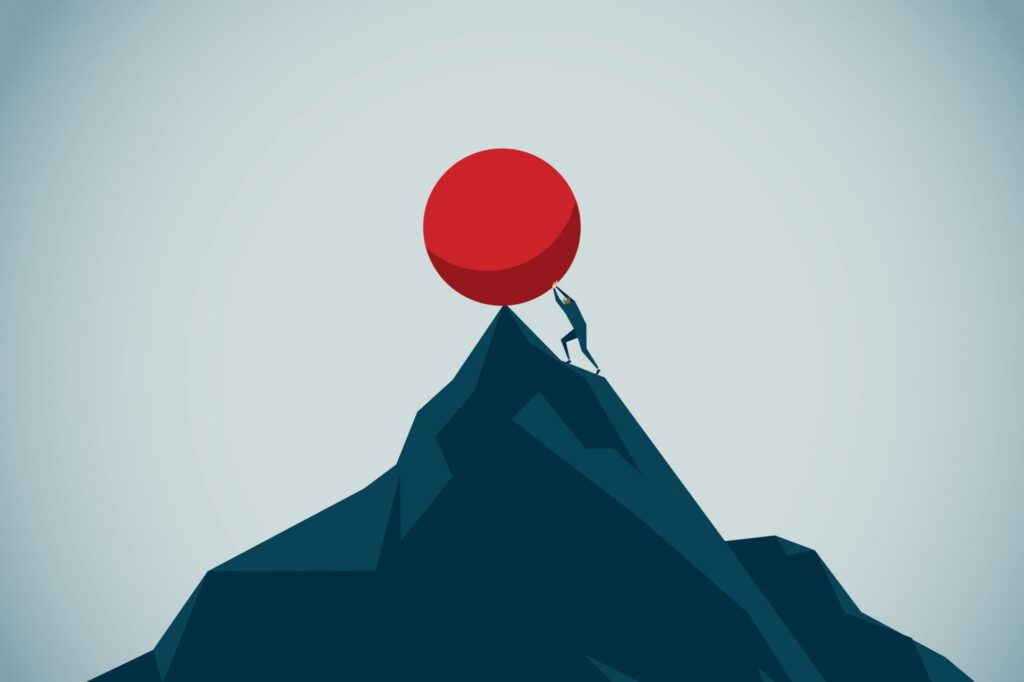The Occupational Safety and Health Administration deemed stress a “hazard of the workplace”. Estimates put the cost of stress at $190 billion a year in annual healthcare bills. And it’s not isolated to specific industries – the problem is widespread. Sixty-five percent of adults say that work is the source of their significant stress.
Stressful situations often result in stressful thoughts. For example, when your teenage daughter is barely speaking to you, you may automatically think, “I am a bad parent.” Likewise, a setback at work may trigger thoughts like, “If I continue like this, I will soon get fired.” Thoughts like these often result in increased stress.
Importance of Resilience, Tenacity and Grit
To combat this ever-present stress, resilience, tenacity, and grit are vital. Webster’s Dictionary defines resilience as an ability to recover from or adjust easily to misfortune or change. Oxford Dictionary says resilience is the ability of people or things to feel better quickly after something unpleasant, such as shock or injury. In other words, resilience is a person’s ability to bounce back.
Tenacity is the mental strength to resist opposition. It is the quality of staying determined. Persevering when the going gets tough and sticking to a project, task, or deadline while figuring out adjustments to perform more effectively.
Grit complements the traits of resilience and tenacity, adding ‘guts’ or courage, and ‘initiative or intention’. It addresses the longer-term goals and learning. So, where tenacity and resilience apply to everyday tasks and fortitude, grit extends perseverance to the idea of working at something day after day, through setbacks and failures, to reach a distant but personally important goal.
Critical Components of Grit
The two critical components of grit are passion and perseverance.
Passion comes from intrinsic interest in your craft and from a sense of purpose—the conviction that your work is meaningful and helps others.
Perseverance takes the form of resilience in the face of adversity as well as unwavering devotion to continuous improvement. The kind of single-minded determination that characterizes the grittiest individuals requires a clearly aligned hierarchy of goals.
What would such a hierarchy look like?
- At the bottom would be specific tasks on the short-term to-do list, such as meetings. These low-level goals are a means to an end, helping the leaders accomplish mid-level goals.
- At the top would be a goal that is abstract, broad, and important—such as increasing workforce engagement and improving the culture of the organization. This overarching goal gives meaning and direction to everything a gritty individual does.
Building Resilience, Tenacity and Grit in Your Organization
One of the best ways of building resilience, tenacity, and grit in your organization is by promoting a growth mindset.

Source: Fixed v. Growth Mindset. “Mindset” by Carol Dweck | Medium |
A growth mindset is a set of beliefs that shape how you make sense of the world and yourself. It influences how you think, feel, and behave in any given situation. People with a growth mindset see failure as an opportunity to grow. They see challenges as a path toward growth and let their effort and attitude determine their abilities. They are inspired by the success of their team members and take feedback as a constructive way of improvement. Leaders with a growth mindset put growth first and unite the business goals around it. They back the risk-takers, knowing there is a possibility of failure.
Effective leaders develop a “gritty culture” of constant learning and growth. Here are a few tips to build a “gritty culture” in your organization:
- Make organizational goals clear and direct
- Ask for commitment from your team
- Share your own stories where you persevered
- Showcase failure as an opportunity to learn
- Reward stretch goals, where an employee had to stretch to achieve the goal
Have you worked with a colleague or leader who promotes resilience, tenacity, and grit? How did it affect you and the organization?
Let’s share experiences. Leave a comment below, send me an email, or find me on Twitter.

